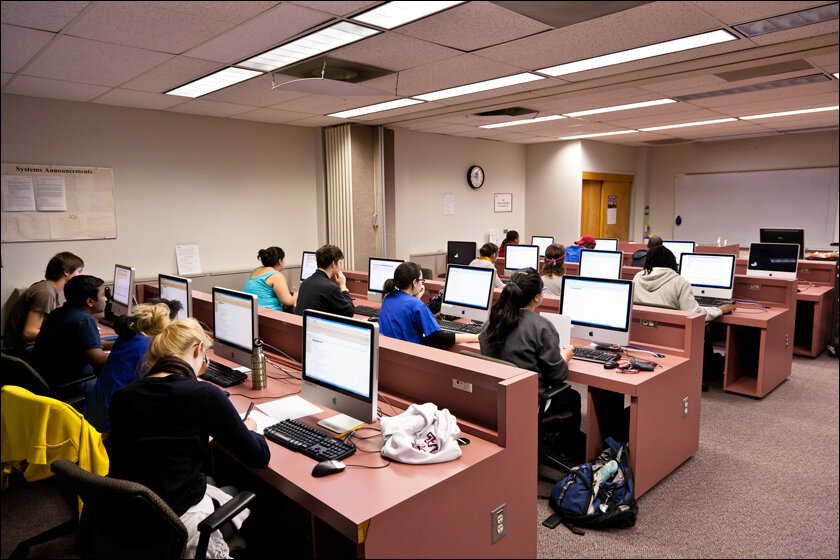It is likely that virtual assessments will play an increasingly important role in the future of work, academics and more says Uma.
After the Covid-19 pandemic, virtual assessments have become increasingly popular in education. Virtual universities have sprung up all over the place, and online assessments are now widely used for a variety of purposes, including submitting assignments, taking initial assessments to gauge students’ interests and skills, and taking general psychometric tests. Let’s take a deeper dive to explore the phenomena and the future.

Advantages vs Challenges
There are many advantages to using virtual assessments. They are more convenient for students, as they can be taken from anywhere at any time. They can also be more cost-effective for schools and universities, as they do not require the same level of infrastructure as traditional assessments. Additionally, virtual assessments can be more secure, as they can be proctored or invigilated remotely. Overall, virtual assessments offer a number of advantages over traditional assessments.
However, there are also some challenges associated with virtual assessments. It is important to be aware of the challenges associated with them and to take steps to address them.
1. Cheating: One challenge is ensuring that students are not cheating.
2. Accessibility: Another challenge is ensuring that the assessments are accessible to all students, including those with disabilities.
3. Clarifications: Sometimes it is difficult to support with clarifications
4. Aligned Objectives: Finally, it is important to make sure that virtual assessments are aligned with the learning objectives of the course.

In Person:
In person exams and invigilation have been popular and customary in most countries. It was always required for many entrance exams because it was the only way to ensure that students were not cheating. Invigilators would watch over students as they took the exam and make sure that they did not use any unauthorised materials or communicate with other students.
This was important because entrance exams are often very competitive, and students who cheat can gain an unfair advantage. However, in recent years, there has been a move towards online exams, which do not require in person invigilation. This is because online exams have developed significantly to be remotely proctored using software that monitors students’ activity and prevents them from cheating using behavioural patterns and limiting access to reference materials and monitoring response times.

Virtual Assessments:
One of the most utilised ones seen in the workplace is psychometric tests which are used to measure a variety of cognitive and behavioural traits. These tests can be used for a variety of purposes, such as:
- Identifying learning disabilities or other cognitive impairments
- Assessing job performance or potential
- Making decisions about educational or career choices
- Screening for mental health conditions
- Researching the causes of behaviour
Basic assessments and psychometric tests are typically administered by trained professionals, such as psychologists or counselors. The results of these tests can be used to provide valuable information about an individual’s strengths and weaknesses, which can then be used to develop appropriate interventions, promotability or support services. These must not be used as the sole basis for making decisions about individuals.

Here are some examples of basic assessments and psychometric tests:
- IQ tests
- Achievement tests
- Personality tests
- Interest inventories
- Aptitude tests
- Neuropsychological tests
While these tests are not perfect, when used correctly, basic assessments and psychometric tests can be a valuable tool for understanding human behaviour.

Other than Psychometric tests, online assessments are used for a variety of purposes, including:
- Continued training and reinforcement for drivers, company employers, and others on checks and rules/regulations.
This can help ensure people are up-to-date on the latest requirements and are less likely to make mistakes. - Anti Corruption training. This can help raise awareness of corruption and how to prevent it.
- Medical condition overview (NHS e-consult). This can help people get information about their condition and treatment options without having to visit a doctor in person.
- Provide feedback on performance.
- Identify areas where further training is needed.
- Track progress over time.
- Motivate people to learn and improve.
- Assess knowledge and compliance.

How does India fare?
India is soon becoming one of the leading countries in the world when it comes to online assessments for school and university exams. In fact, a recent study found that India has the highest adoption rate of online assessments in the world, with over 90% of schools and universities using them. This is significantly higher than the global average of 60%. The use of online assessments in India is a positive development that has the potential to improve the quality of education in the country.
Some interesting stats:
- The average Indian student takes 10 online assessments per year.
- The most popular type of online assessment in India is the multiple-choice test.
Reasons for the high adoption rate:
1. India has a large, growing population of students, which makes it a lucrative market for online assessment providers.
2. The Indian government has been supportive of the use of online assessments, and has invested in initiatives to promote their use.
3. The Indian education system is highly competitive, and students are often willing to pay for online assessments that can help them improve their grades and test scores.

Perceived benefits in India:
1. Help reduce cheating and plagiarism and deal with volumes
2. Provide students with immediate feedback on their performance and reduce cost of checks and errors in assessment
3. Help personalise learning by providing students with customised assessments that are tailored to their individual needs.
4. Improve efficiency by allowing students to take assessments at their own pace and time, removing dependency on teachers doing validation of answers.
Known challenges:
1. Reliability: It can be difficult to ensure that online assessments are secure and reliable.
2. Access: Difficult to determine if students have equal access to online assessments, as some students may not have the necessary technology or internet access.
3. Bias: Difficult to ensure that online assessments are fair and unbiased.
Formative assessments are very popular with students and teachers alike in India.
They are used to provide feedback to students and teachers on their progress where they are typically used to identify areas where students need additional support and to track their progress over time. They are more effective than traditional paper-based assessments by providing students with immediate feedback on their work, which can help them improve their understanding of the material. They also can provide teachers with tools for their professional development with key pointers.
Some popular providers:
- Pearson is the most popular online assessment provider in India which offers a wide range of assessments for students, professionals, and organisations. It is known to be used by over 100 million people in India every year. Pearson assessments are used for a variety of purposes, including admissions, placement, and career development. They are also used for research and evaluation. Pearson is a leading provider of educational and assessment services in the world with a long history of providing high-quality assessments that are used by millions of people.

The Future of Assignments:
The future of AI and machine learning in virtual assessments is evolving rapidly. AI can be used to create realistic virtual environments that can be used to assess students’ skills and knowledge. Machine learning can be used to identify cheating behaviour and to flag suspicious activity. Machine learning can be used to identify cheating behaviour in virtual assessments.
For example, machine learning can be used to identify students who are copying from each other or who are using unauthorised materials during an assessment. Machine learning can also be used to flag suspicious activity, such as students who are spending an unusually long time on an assessment or who are submitting multiple identical assessments.
Plagiarism:
Plagiarism check tools and sites are used to detect plagiarism in text. They do this by comparing the text to a database of known plagiarised content. If the text matches any of the content in the database, the tool will flag it as plagiarism. Plagiarism check tools and sites can be used to check for plagiarism in academic papers, blog posts, website content, and more. They can be a helpful way to ensure that your work is original and that you are not accidentally plagiarising someone else’s work.
Here are some of the most popular plagiarism check tools and sites:
- Turnitin
- Grammarly
- ProWritingAid
- Dupli Checker
- Copyscape
- Quetext
- Plagiarism Checker X
- PaperRater
- Viper Plagiarism Scanner
Key Points to Note:
When using a plagiarism check tool or site, it is important to keep in mind that they are not perfect. They may not be able to detect all instances of plagiarism, and they may not be able to detect plagiarism in all types of content. It is always a good idea to read your work carefully and to use multiple plagiarism check tools to be sure that your work is original.
Bot Check:
Have you seen “Are you a robot?” while using or logging into various sites?. It assesses the movement of clicks to determine if the movement of the cursor and the choice of boxes are human or machine in order to avoid bots. Similarly, in the future, eye movements, etc. can be used to virtually invigilate exams. This would be a more effective way to prevent cheating, as it would be difficult for a student to control their eye movements in order to give the appearance of being human. Additionally, it would be more difficult for students to collaborate on exams if they were being virtually invigilated.

The Future of Virtual Assessments
Overall, it is likely that virtual assessments will play an increasingly important role in the future of work. However, there are a number of challenges that need to be addressed before virtual assessments can be widely adopted.
Some Leaving Thoughts:
- Virtual assessments will become more sophisticated and will be able to assess a wider range of skills and abilities.
- Virtual assessments will become more personalised and will be able to tailor the assessment to the individual candidate.
- Virtual assessments will become more integrated with other parts of the hiring process, such as background checks and interviews.
- Virtual assessments will become more widely used in a variety of industries, including education, healthcare, and government.
In case you missed:
- None Found









